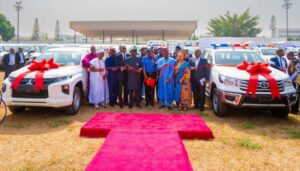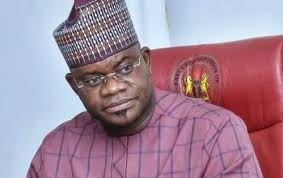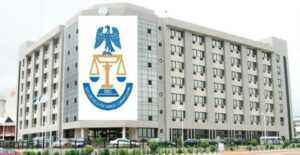Oil, Gas projects: NCDMB achieves 42% local content for multi-billion dollar contracts
…NOGIC implementation produces Seplat, Eroton, Aiteo others
…Unveils operating models for $50m Nigerian content research, development
By Uthman Salami
The Nigerian Content Development and Monitoring Board (NCDMB) has achieved 42 per cent local content equity partnership, an improvement to what the 30 percent the Board recorded in 2019.
These include 10 million training man-hours by over 7,000 trainees in-country; 420 MTa pipelines including two worlds class mills in Abuja & Lagos; registration of 224,679 individual accounts,7,072 service company accounts and 72 operator portal accounts on the NOGIC JQS (Nigerian Oil and Gas Industry Content Joint Qualification System- an Electronic Platform for Data Consolidation on all major activities in the Nigerian Oil and Gas Industry); emergence of 3 indigenous exploration & production companies (Seplat, Aiteo and Eroton) with over 50,000 barrels per day oil production capacity; Creation of $350 million local content fund; 60,000 MT fabrication capacity, 40% of marine vessels owned by indigenous companies flying Nigeria’s flag; in-country manufacturing of LV/HV cables; in-country barite processing, in-country pipe coating and FPSO integration in-country among others.
The General Manager, Planning Research and Development (NCDMB), Mr Abdulmalik Halilu said that local content in the sector had grown from less than five per cent in 2010 to 42 per cent.
Halilu said investment in research and development is needed going forward, to sustain the progress being made in the industry.
He added that investment in areas such as manufacturing, fabrication, design engineering, project management, oil services, among others would enable more Nigerian companies to become major players in the sector.
The Nigerian Oil and Gas Development Law 2010 defines local content as “the quantum of composite value added to or created in Nigeria through utilization of Nigerian resources and services in the petroleum industry resulting in the development of indigenous capability without compromising quality, health, safety and others.”
It was enacted to promote indigenous participation in the Nigeria’s oil and gas industry for the purpose of improving the economic and social well being of those engaged in operating in the oil and gas industry.
It also provides for the development of Nigerian content in the Nigerian oil and gas industry, Nigerian content plan, supervision, coordination, monitoring, and implementation of the Nigerian content.
In 2019, the Board recorded a groundbreaking 30 per cent of local participation in the Nigerian oil and gas. According to the Board, through policy consistency, Nigeria’s participation in the oil and gas industry is expected to reach 70 per cent.
TotalEnergies is one of the International Oil Companies (IOCs) identified recently by NCDMB for taking key financial investment decisions (FIDs) on major projects in the last ten years and has kept faith with Nigeria’s oil and gas industry. Executive Secretary of the NCDMB, Engr. Simbi Kesiye Wabote gave the commendation at the load-out ceremony of the topsides of the Ikike Development Project at the Saipem Yard in Port Harcourt.
According to the NCDMB ES, “Our mandate is to ensure that this is the case across all the various projects including NLNG Train-7.”
In 2021 alone, the NCDMB projects developed by investors in partnership with the Nigerian Content Development and Monitoring Board (NCDMB) are expected for completion before the end of 2021.
These include the Rungas facility in Polaku, Bayelsa State that would manufacture 400,000 units of Composite LPG Cylinders per annum and BUNORR production plant in Port Harcourt, Rivers State, which would produce 48,000 litres of base oil per day.
The other two projects include NEDO Gas’ 80 million standard cubic feet per day gas processing facility upgrade and expansion, plus 300 million standard cubic feet per day KGG manifold in Delta State, and DUPORT Midstream Ltd’s Energy Park, which comprises 2,500 barrels of crude oil per day modular refinery, 40 million standard cubic feet per day gas processing plant and 2 megawatts power plant.
This revelation of 42% local content achievement was made at a workshop organized for stakeholders in the media industry which had as its theme, “Sustaining Nigerian Content Amidst Shifting Energy Landscape: The Role of the Media.”
In a model made available to Nigerian NewDirect, Strategic enabler for home grown technology development; Four (4) focus areas- Research studies; commercialization of Research; establishment of CoE and endowments, including Involvement of multiple stakeholders with deep knowledge of Research for development- Technical Advisory Board and Nigerian Content Research and Development Council are some of the operating model of NCRDF.
Halilu said the NCDMB had in 2020 initiated the $50million Nigerian Content Research and Development Fund to support the companies.
Also at the workshop, while emphasising the role of media as critical in promoting the development of Nigerian content in the oil and gas industry, the General Manager, Corporate Communications and Zonal Coordination Division (NCDMB), Dr Ginah Ginah charged the media to continue to support local content drive of the Board.
Ginah, represented by Mr Naboth Onyesoh, Manager, Corporate Communications, NCDMB, said the oil and gas industry was very important to the nation’s economy, hence the need to have more local players in the sector.
He noted that NCDMB was established to drive indigenous participation in the oil and gas space and was working towards achieving 70 per cent Nigerian content by 2030.
Ginah urged the media to promote local content agenda and carry out whistle blowing role by exposing non-compliance activities by players in the industry through investigative journalism.
He said since inception in 2010, the board had identified the media as one of the most important stakeholders in its implementation of the Nigerian Oil and Gas Industry Content Development (NOGICD) Act.
According to him, this collaboration is even more important as the world moves towards energy transition which is likely to impact Nigeria’s economy.
Ginah said the NCDMB had aligned itself with the Federal Government’s plan to leverage Nigeria’s gas resources as the nation’s transition energy through the declaration of 2021 to 2030 as the Decade of Gas.
He said the NCDMB had made several interventions in the gas value-chain which span the development of Liquefied Petroleum Gas (LPG) storage terminals and jetties.
Ginah said these also include inland gas processing to produce LPG and propane, infrastructure for gas gathering and injection into gas pipeline networks, Compressed Natural Gas facilities, and manufacturing of composite LPG cylinders.
Cotton prices soar to highest level in Adamawa
Cotton prices
surged to a one-
year high in
Adamawa, owing to growing demand of the commodity.
A check in Yola on Wednesday showed that prices skyrocketed to over 50 per cent in the past 12 months amid low supply.
Prices showed sprawling increase since the drastic drop in production witnessed during the previous farming season owing to high input costs and logistics snarls coupled with rising demand.
One kilogramme of cotton was sold at N300 as against its previous prices of N180, while a tonne of the commodity costs over N300,000.
A cross section of the farmers attributed the hike in the prices to low supply occasioned by low yields recorded at harvest.
Alhaji Musa Baruwo, a cotton grower in Yola, said that few farmers were now cultivating the cash crop due to exorbitant prices of inputs.
Baruwo identified lack of incentives, poor inputs and activities of middle men as some of the challenges affecting cotton production in the state.
“Presently, farmers are planting local variety seeds producing low yields and expose them to losses,” he said, adding that provision of improved seeds, enhance farmer access to extension services and agricultural financing would encourage cotton production.
A cotton farmer in Demsa, David Ibrahim, blamed cotton marketers for the unilateral hike in prices.
Ibrahim said that cotton farmers were at the mercy of the middle men who had monopoly over the prices and exploit farmers.
“Lack of modern techniques, farmer enterprising skill and poor market condition are factors affecting cotton farmers in the state.
“Adamawa is fertile land suitable for cotton production, however, middle men mopped up the crop at lower prices at harvest, thereby exposing farmers to losses,” Ibrahim said.
The farmer advocated for proactive measures to regulate prices and check activities of the middle men.
Another farmer, Mr Usman Yaki also called for inclusion of genuine farmers in the National Cotton Revival Programme, to accelerate production to meet local demand and export.




